‘Your Future Energy’ brings solar cell practical to Cambodia
Making young Cambodians passionate about clean energy – how do you accomplish this? Students Kim van Maldegem and Mare Dijkstra travelled to the Asian country last February to share their knowledge and enthusiasm about solar panels with thousands of secondary school students. As part of the Solar Lab Tour, they took the solar cell practical from the ‘Your Future Energy’ truck to many schools in four different municipalities.
The two Dutch students did not know each other before starting this adventure. They, however, complimented each other well. As a physics student and a student assistant at the ‘Your Future Energy’ truck, Mare was familiar with the solar cell practical. She visited many Dutch primary and secondary schools with the truck, challenging students to engage in the conversation about the energy sources of tomorrow, as well as conducting this practical with them. Molecular biology student Kim was not yet acquainted with the experiment but had previously worked with school children in Borneo, also in Asia, on a project about disposable plastics.
With their joint knowledge and a suitcase filled with materials the girls boarded a plane at the end of February. This was not without apprehension, Mare said: ‘We brought all the equipment for the practical with us, including titanium dioxide.’ She grins. ‘This is a white powder, of which we brought many jars. Despite the fact that traveling with TiO2 is legal, we were a bit worried about whether we would be allowed to take it with us. Luckily no one was bothered.'
There was not a lot of time to recover from the trip. The day after their arrival, the girls were expected at the EnergyLab headquarters in Phnom Penh. During the first week of the project they got to know the staff and ambassadors of the project, taught them about the solar cell experiment, and prepared for the tour. Over the following two weeks, they got into a car early in the morning six days a week to travel to secondary schools in the municipalities of Phnom Penh, Kandal, Kampong Speu and Takeo. They were joined by two Cambodian university students and a cardboard box filled with equipment.
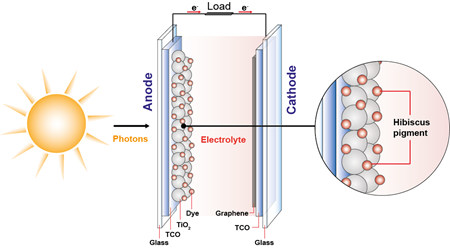
Hibiscus tea
Solar cells can convert light into electrical energy. But how? This is wat Mare and Kim taught the Cambodian students during the Solar Lab Tour. The students were then asked to roll up the sleeves of their lab coats themselves: they built working solar cells that use a dye to convert sunlight into electrical energy. Such a solar cell is called a dye-sensitized solar cell (DSSC) or Grätzel solar cell.
You can easily make a DSSC yourself with some materials that you can order online. First, you need two glass plates coated with transparent conductive oxide (TCO). You add a graphite layer to the first of these plates by simply colouring it with a pencil. This first glass plate will be your positive electrode or anode. The other glass plate must be coated with titanium dioxide (TiO2). This glass plate will later be the negative electrode or cathode of your solar cell. Titanium dioxide is a white pigment used in paints and toothpaste.
The next thing to do is to make yourself a nice cup of hibiscus tea. Not for drinking, but for dripping onto the TiO2. The red pigment in the hibiscus tea will be your solar cell’s electron donor. The pigment will form a complex with the TiO2 nanoparticles. Finally, you will have to add some electrolyte solution to the second glass plate. You can now press both glass plates together with the graphite and the TiO2 facing each other. To hold everything in place, you can place a crocodile clip onto your solar cell.
If light is now going to shine onto the solar cell, many things will happen between those two small glass plates. The light energy is taken up by the hibiscus pigment in the form of a photon. This extra energy makes the pigment unstable. Therefore, the pigment releases a small amount of energy in the form of an electron. This electron travels to the positive electrode via the TiO2. Only when the electron returns via the negative electrode, the circle is complete and a new reaction can take place.
The effectiveness of the solar cell process can be measured by connecting the solar cell to a voltmeter. This is why all students and teachers gathered around the equipment in the burning sunlight to view the effect of their day’s hard work.
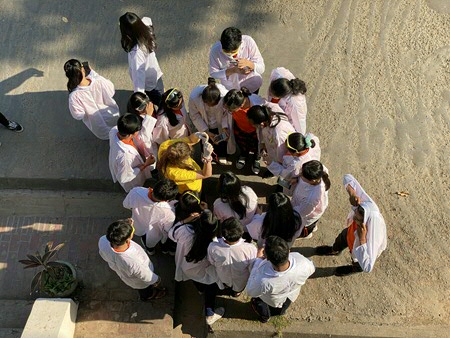
Helping hands
Supervising a practical in Cambodia is quite different from supervising a practical in the Netherlands, Kim says: ‘Schools rarely had any electricity. We prepared a PowerPoint presentation, which we were then not able to offer to the students. Luckily, we were able to get hand-outs on paper.’ The experiment itself also had to be adapted a little. Mare explains: ‘Usually we let the titanium dioxide dry properly while we show the students a video. We did, however, not have the electricity, and hence the time, to do so.’ As expected, the Cambodian climate helped to dry the TiO2 very quickly, which is why the change did not cause any problems.
A difference from working in the ‘Your Future Energy’ truck were the extra helping hands. The Dutch students worked together with 24 Cambodian university students, who helped by translating and assisting during the practicals. Without them, the whole operation would have been a ‘mission impossible’. Cambodian classes can be as large as a hundred students. You would not be able to manage with just your own two hands.
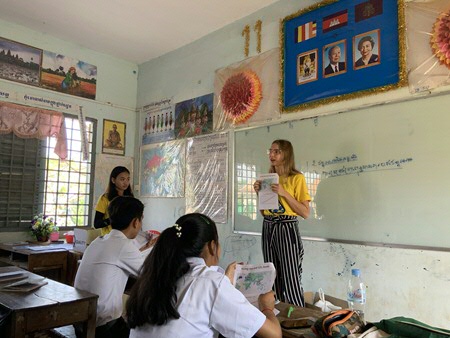
The Solar Lab Tour was a unique experience for the Cambodian students. Most of them had never participated in a practical before, and were therefore new to the concept of wearing lab coats, goggles, and gloves. This resulted in a lot of enthusiasm and a lot of selfies. The Dutch students could of course not be missing from these photos. The class and the practical were also received positively. The students were listening with fascination to the presentations and the instructions, and they worked on the assignment with diligence. They managed to make nice solar cells that worked well. Afterwards, they energetically helped with the cleaning.
After three weeks, the adventure came to an end. Kim and Mare safely returned to the Netherlands. The voltmeters, lab coats, glasses and other equipment found a new, permanent home in Cambodia, enabling future experiments to be performed.
The Solar Lab Tour took place from February 24t h till March 7th, 2020. This project aimed to make secondary school students enthusiastic about clean energy. It was organized by the University of Groningen and EnergyLab Asia. In the end, the tour managed to reach around 3,600 students from 24 different secondary schools.
Text: Kaila Ronde
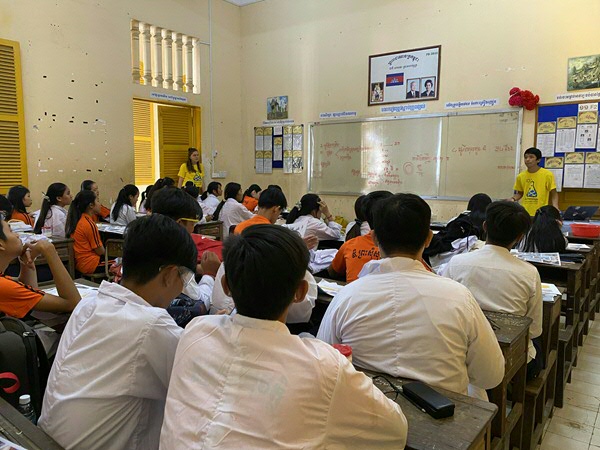
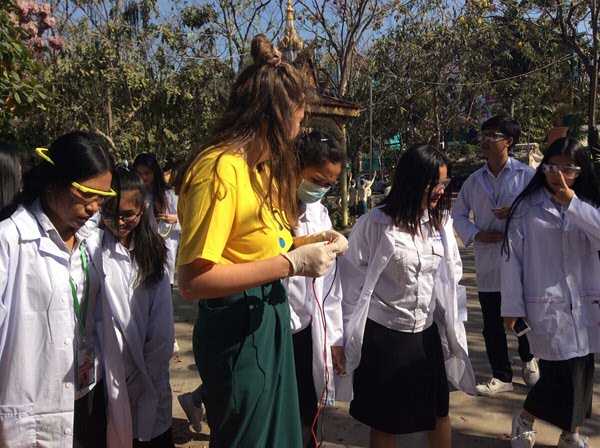
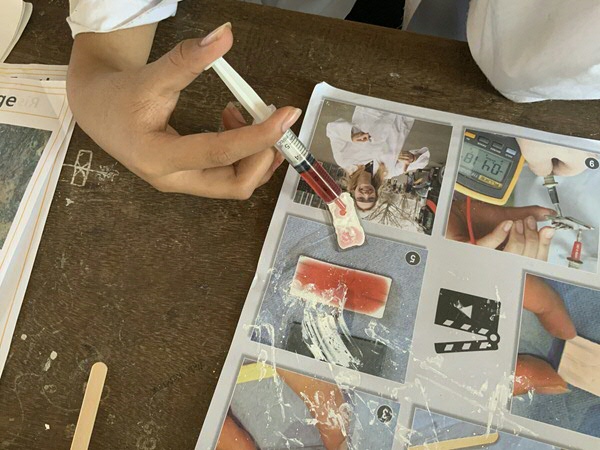
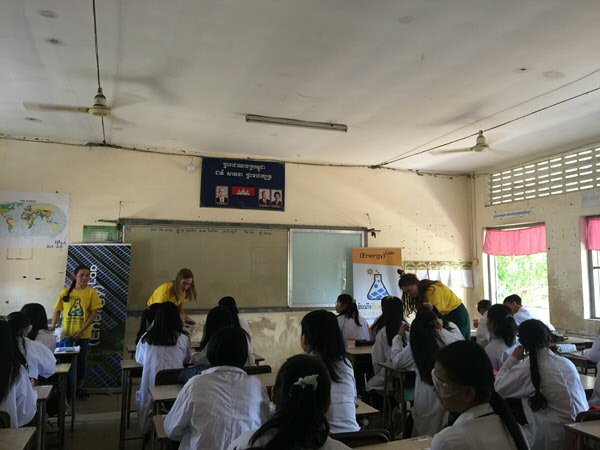
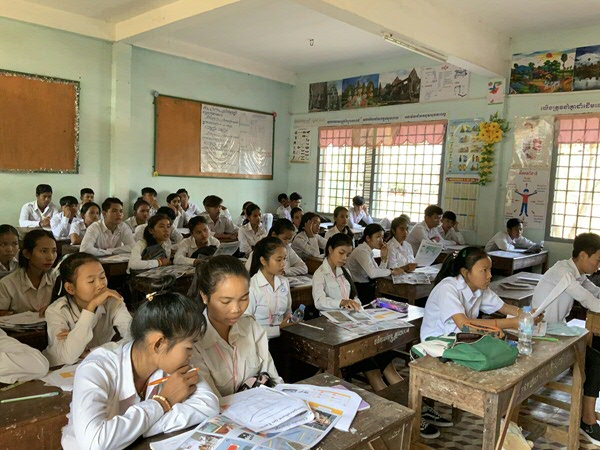
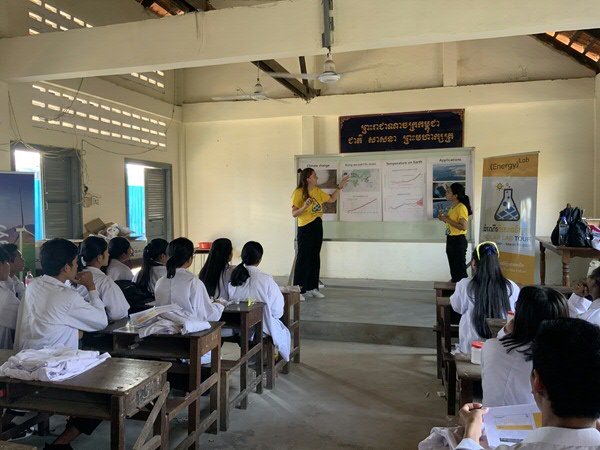
| Last modified: | 28 April 2020 12.24 p.m. |
More news
-
13 May 2024
Trapping molecules
In his laboratory, physicist Steven Hoekstra is building an experimental set-up made of two parts: one that produces barium fluoride molecules, and a second part that traps the molecules and brings them to an almost complete standstill so they can...
-
29 April 2024
Tactile sensors
Every two weeks, UG Makers puts the spotlight on a researcher who has created something tangible, ranging from homemade measuring equipment for academic research to small or larger products that can change our daily lives. That is how UG...
-
16 April 2024
UG signs Barcelona Declaration on Open Research Information
In a significant stride toward advancing responsible research assessment and open science, the University of Groningen has officially signed the Barcelona Declaration on Open Research Information.

